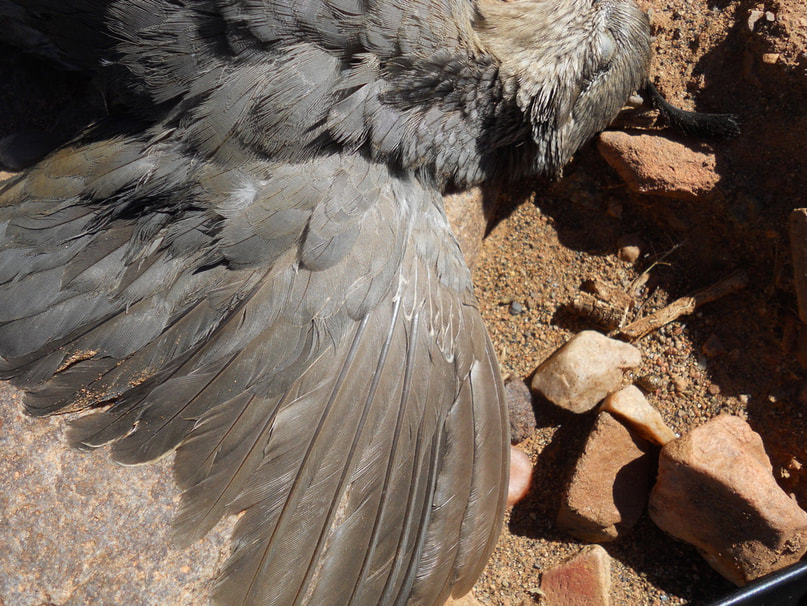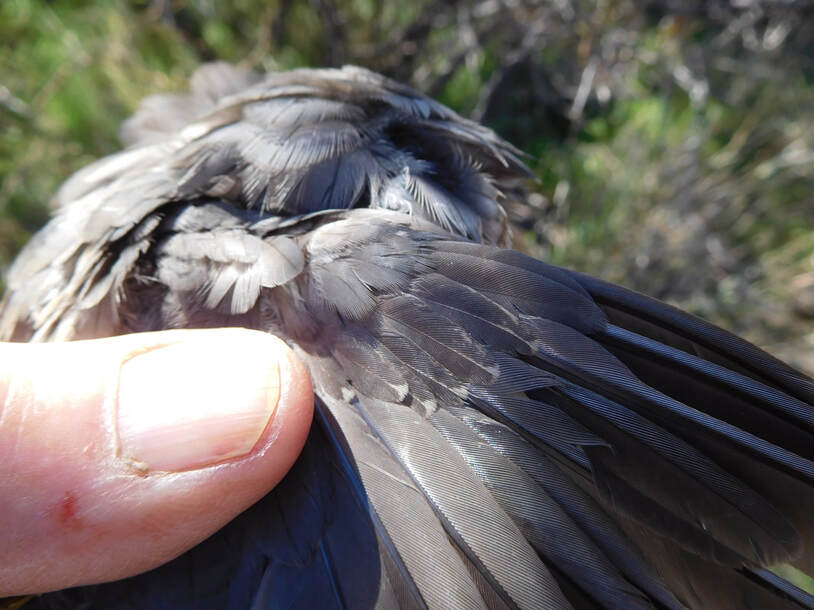So, what should you wear or bring on an Arizona Quail Hunt?
After 65 years of hunting Arizona quail, here are my recommendations and tips:
Edited: 03/7/24
- Carry a leatherman. Remove cactus, repair your glasses, remove a jammed shell hull. I also carry a small comb for flipping cacti out of the Britts. Depending upon circumstances and type of cacti, works well.
- Carry water. I use a Hydropack or Camelback with 70 oz. for Britts and me. The last few years I've also started carrying a plastic water bottle and a collapsible water bowl/pouch to hydrate the Britts after the first 30-45 minute hike, especially when the temps are high during early season. Early season can be a problem keeping the dogs cool. If possible, hunt near a water source so they can get wet and cool down.
- Wear light, Gortex lined, waterproof, uninsulated hiking boots. My favorite brands are Keen's, Danner's or Lowa's with Vibram-type soles. Soft-soled boots will be torn to shreds in one or two hunts. Insulated boots are overkill in Arizona. Once you start walking your feet will be warm.
- Wear a blaze orange vest and/or cap. For safety reasons but also so hunters in your group can see you when you are a ridge or two away.
- Pants. I like either heavy jeans or Carhart-type. If you are hunting in heavy, thick catclaw, definitely get the type with reinforced material on the front. I don't wear snake leggings or chaps but many friends do.
- Snakes: Rattlers will be out until we get a good freeze which is usually some time in mid to late Nov. Sept and Oct just count on seeing snakes. Snake vaccinations and avoidance training for the dogs -- a good idea -- especially if you are bringing your dogs to Arizona from a different habitat.
- Shirts. Layer. Most days Nov.-Feb. I wear a light cotton long sleeve. Roll it up when the day warms.
- Quail call: I have started using CJ's quail call to locate Gambel's. With practice, you can do "covey clucks" and the more familiar "Chi-CA'-go" call to locate and regroup after the covey is split. Wait. Sometimes the giveaway cluck is several minutes after you call. Many times a return call will give away the covey location. I always start with the covey cluck and wait before ever using the Chi-CA-go. Try the cluck first. The best quail caller I've ever run across is Duwane Adams from San Manuel. He uses the Faulk's Q19 Western Quail Call and is expert at locating a covey using vocalizations.
- Gloves. Both left and right batting or shooting gloves are great on cold days and for pushing your way through mesquites and catclaws.
- Guns & ammunition: The Corley clan has carried 20 ga. the last 30+ years shooting 7/8 oz shot, reloaded for 1,175 ft/sec. It is considered a "light field load."
Since 1997 we have loaded size #7 shot. Love it. Still a good pattern with 7/8 oz. but good knock- down effectiveness and fewer crippled birds. Remember also, that we hunt with pointing dogs, so many shots are closer. Big difference. Factory loaded 7's are rarely available, and and good heavy field load of 7 1/2's is the most common shotshell for Arizona hunters. - Jan. of 2017 I loaded some size 6 shot as a late-season desert bird trial. One oz. at 1,174 fps. Like it. A lot. Very, very few cripples. Have even extended my "shooting range" some with my standard IC choke tube. Wondered if perhaps I would hit closer birds too "hard", i.e., tear the birds up too much for table fare. Has not been a problem. Certainly recommend you try size 6 or 7 shot -- especially if you hunt late-season desert birds with no dog. I will, however, stick with my 7/8 oz size 7 or 7 1/2 shot for Mearn's quail. Some good hunter friends I know even shoot 8's or 9's for Mearns'.
- During 2023 and 2024 I have used 1 oz of 7's for desert birds. Love the results.
- In Oct., 2019 I picked up a beautiful little 5 lb, 12 oz Rizzini Iside Prestige 20 ga SxS (Actually, FAIR Fabricca, Armi, Izidora, Rizinni). It is a joy to carry and I have used it now pretty much exclusively for upland birds from 2019 to present. My father and son have had great success with Remingtons. Dad used a lightweight 1100 auto and Matt a lightweight 870 pump both 20 ga. with improved cylinders. My "back-up" guns are now a Beretta Blackwing O/U and a Beretta Xplore A400 semi-auto, lightweight 20's. Choke of choice remains IC during early season.
- If you hunt with NO DOGS. Our desert birds are extremely hardy. You can knock a bird down hard (it seems) and if they can run or move you may never find it or put it in your bag. So. . if you have no dog to help with retrieves and you are not shooting over pointing dogs, consider moving to a tighter choke, and size 6 shot and more of it -- say 1 oz for 20 ga or 1 1/4 oz for 12 ga. You want to find the bird and have fewer lost cripples. If you try for Mearn's without a bird dog, you will be at a severe disadvantage.
- For the Britts: I use "PadHeal" and "Tuff-Foot" as first aid and dog pad conditioners. I use Lewis Dog Boots (out of Okla.) if I hunt the Britts several days in a row and they need the added reinforcement or protection. Use Vet Wrap to protect the ankle underneath the boot, then medical tape or ductape to attach the boot then to Vet Wrap. I much prefer to toughen up their feet and run them barefooted. Dog pads not conditioned to our desert rocks (even volcanic in many areas) can suffer foot damage quickly.
For cuts, abrasions, wounds, I use EMT gel, Schriener's or Blue Solution (an iodine antiseptic). - Check your dogs' feet after each hunt. Especially for cuts, worn pads, and seeds like foxtails. Those seeds can embed in the webbing of the foot and migrate under the skin to cause sores and infections.
- Carry a light, digital camera for that point and photo of a lifetime.
- Get your muscles and your feet in shape. If you are used to Nebraska corn fields, soft Iowa plowed ground, Texas flatlands, or Michigan woods, the Arizona desert can put a hurt on you. Your feet will notice it before your muscles do!!
- How do you identify juvenile birds of the year?
- Mearns: "adult carry-over Mearns' have distinct barring on the wing coverts compared to irregular barring in the juvenile birds of the year." David E. Brown, "Arizona Game Birds", c. 1989, pgs. 116-117. Many years the head plumage of Mearns' birds of the year is distinctly not fully developed or matured. Brown's study and data from 1965 - 1978 shows Mearn's birds of the year percentage ranges to be from 57 - 88% depending almost completely on June - August precipitation and protection from overgrazing, i.e., the higher the percentage, the better the hatch and survival of young.
- Gambel's and Scaled: Brown also tells you how to ID Gambel's and scaled juveniles using the covert feathers. pgs. 6 and 163-164. A great resource if you haven't checked it out.

In center of photo see small covert feathers mottled white with white margins of a juvenile Gambel's bird of the year. Adult covert feathers are completely gray. Scaled and Gambel's are identified this same way. Mearn's young, however, have irregular barring on the covert feathers and immature head plumage, so somewhat different means of identification. Click on photo to enlarge. From David E. Brown, Arizona Game Birds, c.1989
Don't Know Where to Hunt?
Jan. 11, 2020 It happens every year in January. Queries like: "I've never been to Ariz. But I'm coming this year so where should I hunt?" And, admittedly, our state can be overwhelming when deciding where to camp or hike. You will find that hunters (and bird hunters especially) keep locations close to their vests. For good reason. A good area can become poor quickly if it's touted on the internet or in national magazines.
I usually say, "Go to that well known hunting location, check out the habitat and conditions, then go find another location just like that with fewer hunters."
A couple of suggestions:
1. Know a personal friend in Arizona or a special friend or family member who has traveled here? Offer to team up and help with expenses.
2. Offer to do a "hunt exchange" with a good fishing or hunting option in your own home location. That always breaks the ice.
3. Meet some good bird dog people at regional or national dog trials or upland events and keep in touch.
4. Our AGF does a good job describing each unit and the hunting possibilities of each on their official website. Link below.
Bottom line: Welcome to our beautiful desert. Everybody wants to be here in January. It's the reward we get for dealing with June/July/Aug!
I usually say, "Go to that well known hunting location, check out the habitat and conditions, then go find another location just like that with fewer hunters."
A couple of suggestions:
1. Know a personal friend in Arizona or a special friend or family member who has traveled here? Offer to team up and help with expenses.
2. Offer to do a "hunt exchange" with a good fishing or hunting option in your own home location. That always breaks the ice.
3. Meet some good bird dog people at regional or national dog trials or upland events and keep in touch.
4. Our AGF does a good job describing each unit and the hunting possibilities of each on their official website. Link below.
Bottom line: Welcome to our beautiful desert. Everybody wants to be here in January. It's the reward we get for dealing with June/July/Aug!
Ariz Quail Hunting Camp Copyrighted by Bob Corley, Use by permission only.

